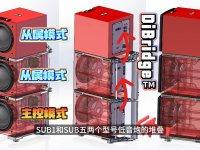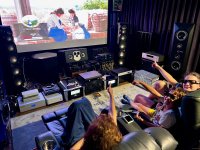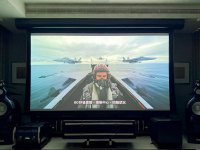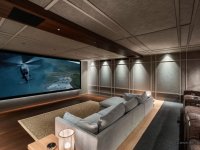Disclaimer:
The following procedures may not work in all cases, as there are too many variables to account for in this document.
If you feel further assistance is required, please visit the AVS Forum Official Audyssey thread, linked above.
I.Room Setup
Lower the noise floor of the room (<45dBA) by turning off the HVAC system, projector, etc.
II.Microphone Setup
A. Use the microphone that came with the unit.
1. Use of a different microphone will cause incorrect frequency response measurements because of different internal calibration.
B. If you feel the urge to use another microphone, re-read section A.
C. Mount the microphone on a tripod.
D. Point the microphone at the ceiling.
E. Place the microphone at ear height when seated.
F. If the seat back is higher than your head, ensure the microphone is above the seat back.
1. If the seat back is a few inches behind the microphone, this will cause additional reflections.
G.Place the microphone in the primary listening position for the first measurement.
1. Audyssey uses this measurement to set the speaker distances and levels, so the microphone should be placed in the seating position used the most.
| 



